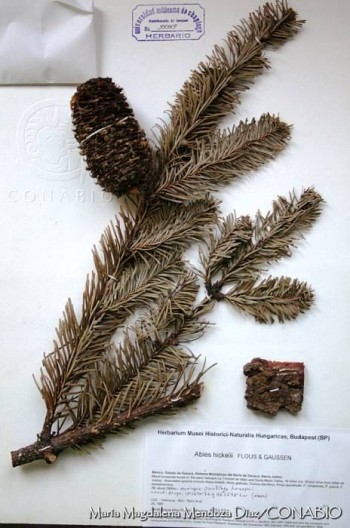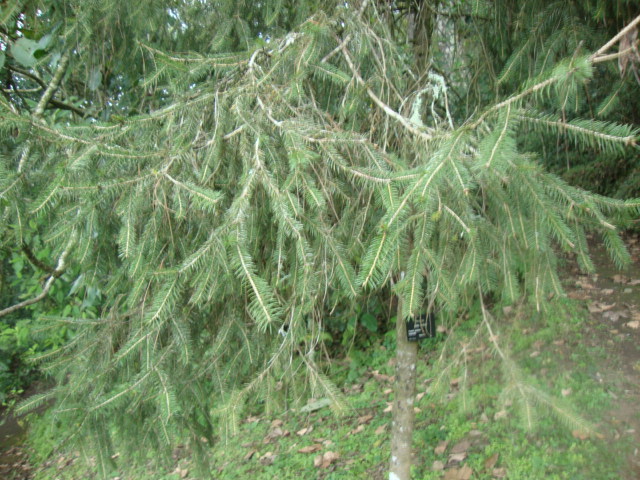
Abies hickelii was first described in 1932 by Fernande Flous (born 1908) and Henri Marcel Gaussen (1891 - 1981) of Harvard University Herbaria. This species is commonly known as Hickel's fir, named in honor of French botanist R. Hickel. Other common names include oyamel or pinabete in the Spanish language.
There are two recognized varieties -
Description. Hickel's fir is an evergreen coniferous species of tree which grows mature heights of 100 feet (30 m) tall with a 50 inch (130 cm) diameter trunk at breast height, usually seen with a single, straight, round trunk, often clear for a good part of the tree's height. The tree's crown is narrowly conical, less regular in old trees.
Distribution. This species is native to southern Mexico - the states of Guererro, Oaxaca, and Chiapas growing at elevations of 8,000 to 9,600 feet (2,500 - 3,000 m) above sea level, where the climate is cool, oceanic, and winter-wet. It naturally grows in volcanic soils. It is occasionally found in pure stands (at the highest elevations), but mostly in mixed stands.
Ethnobotany. In habitat, this rare species is seldom and then incidentally harvested for timber. It is rare in cultivation, largely limited to botanical gardens in areas with a warm-temperate climate.


